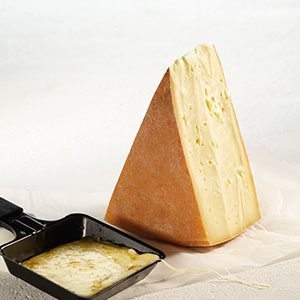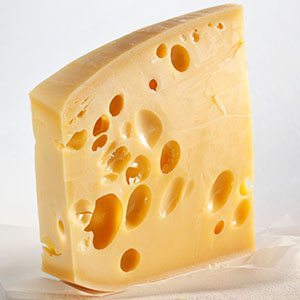If you don’t already have plans for July 2 through July 24 this year, I have a suggestion. The Tour de France — the greatest bicycle race in the world and the third-most popular sporting event, drawing close to 4 million TV viewers worldwide — takes place during those three weeks. Even if you can’t be among the thousands of spectators cheering the competitors on along the 2,200-mile route, you can still join in the excitement of the race.
All you need is a love of great cheese and a healthy dollop of joie de vivre. Oh, and a map of the 2016 Tour de France route — but I’ll explain that later.
The race started innocently enough as a gimmick by journalist Géo Lefèvre to boost sales of his struggling sports newspaper, L’Auto. The year was 1903. The Industrial Age was in full swing, and the fast-moving bicycle was all the rage. The editor of L’Auto at the time, Henri Desgrange, a former champion bicyclist himself, jumped at the idea of turning France into the world’s largest bicycle racetrack.

That first year the two designed a 1,500-mile route that looped around the country from Paris to Lyon, passing through Marseille, Toulouse, Bordeaux and Nantes before returning to the French capital. Though arduous there were only six stages — unlike this year, which has 21 — and no Alpine climbs. However, the distance covered in each stage was draconian, averaging 250 miles and requiring three-day rest stops in between.
Over the years the race has been refined and reconfigured — even blurring the borders a bit, such as this year when racers nip into Spain and Switzerland. And only the best get to compete.
The 2016 Tour de France promises to be the most challenging yet. It’s not only longer by 99 miles but also more vigorous with six mountain climbs. As in past years beginning with 1978, the race will kick off not in Paris but outside its borders. This year it begins in Western France before traditionally ending on the Champs-Élysées.
But while this year’s race marks a 103-year-old French tradition — the race was suspended during World War II — there is a much older one. The tradition of cheesemaking.
Just as the French are known to produce world-class wines, so too are they known for their cheesemaking artistry. As food writer Patience Gray aptly said, “Cheese is probably the best of all foods, as wine is the best of all beverages.” No argument there.

Ah, now about that map …
You need it not only to follow the stages of the Tour, but also as your guide to some of France’s incomparable cheeses. For each stage brings the bicyclists through varying terrains, from sandy beaches to flat paved roads to dizzying mountain heights to villages that date back to Charlemagne. And each of the areas the racers pass through offer cheeses that you do not want to miss tasting.
Just as the terrain of the Tour changes, the types of cheeses also vary according to their terroir, milk, taste and texture. From cow to goat, to ewe and sheep, from sweet to grassy to stinky, and from creamy to semi-soft and semi-hard to hard, you’ll find examples of them all along the 2016 Tour.
Though you should sample the cheese offering from each of the stages, we have cobbled together eight stages for you that encompass examples of France’s different cheese styles. And along the way we’ll tell you a little about the areas the racers will pass through.
Three Classic Cheeses
We begin with stage one on July 2 at the Norman town of Mont Saint-Michel, and then move on to Utah Beach. A majestic island, Mont Saint-Michel sits high above the shimmering sands and swirling sea between Normandy and Brittany. It has been described as one of Europe’s unforgettable sights, and its 8th-century Benedictine monastery continues to draw tourists today. You’ll find its Grande Rue crowded with restaurants, cafes and shops. Be sure to sample the area’s three classic cheeses: Camembert de Normandie, Pont l’Évêque and Saint-André.

Traditionally, Camembert de Normandie is a raw cow’s milk cheese with a bloomy rind and is packed in its own wooden box to protect its glorious, soft, succulent, creamy center. The raw version is not always easy to find, even in France. The good news, however, is that there are wonderful pasteurized Camemberts to be found both in France and the United States.
Pont l’Évêque, a washed-rind cheese made from cow’s milk, just might be the oldest Norman cheese still being produced. Its pâte is a creamy yellow that sinks when pressed with a fingertip and leaves a lingering sweet taste. Pair it with the region’s Calvados or with a good hard or soft apple cider.
Despite its holy name Saint-André, a rich, buttery triple-crème cow’s milk cheese, is downright devilishly decadent. Its velvety, bloomy edible rind easily gives way to an ivory color pâte. In the Brie family, it carries a more intense flavor. Although it pairs well with wine, try an American IPA for a pleasing match.
Skipping to stage five on July 6 we arrive at Limoges in the Loire Valley. Since the 17th-century, Limoges has been synonymous with fine porcelain. And if you adore goat cheese, there’s no better place to be. Even if you’ve snubbed these royal members of the cheese kingdom before, now is the time to sample a few Chèvres such as Chèvre Bouche, which has a mild tangy flavor with hints of caramel encrusted in a christening white bloomy rind. Another goat cheese not to be missed is Saint-Maure.
Our third stop, stage seven on July 8, brings us to L’Isle-Jourdain and Lac de Payolle, climbing into the rugged mountains of the Pyrénées in southwestern France. Here you’ll find Etorki, a semi-hard ewe’s milk cheese in the Muenster family. It’s mildly sweet, creamy and rich with a slight nutty flavor and a caramel finish. It pairs well with Chardonnay and sparkling wines, even a port.
A Great Introduction
Stage eight on July 9 winds through Pau and Bagnères-de-Luchon, also in the Pyrénées. A lively university town Pau boasts exquisite examples of Belle Époque architecture; the Chateau de Pau, the birthplace of Henry IV in 1553; and the Musée des Beaux-Arts, where you will find among its treasures a Rubens, an El Greco and a Degas. The area is also a must-stop for sheep-milk cheese lovers. Among the cheeses you’ll find two outstanding varieties: Le Brebiou and Petit Basque — one of my all-time favorites. Brebiou, a pasteurized sheep milk cheese, is relatively new, produced first in the 1990s. For the newbie to sheep milk cheese this is a great introduction. It’s mild, slightly grassy and sheepy in flavor, and its creamy ivory texture is soft and tantalizingly oozy.
As its name implies, Petit Basque is produced in the Basque region of the Pyrénées, bordering between France and Spain. The Petit is a little milder, sweeter and nuttier than the fuller-tasting Ossau-Iraty. In my book you can’t go wrong with either. Both pair well with cured meats, olives and pâtés, or you can serve them with such fruit as figs, pears, apples and apricots, or their preserves.

Our next stage, number 11 on July 13, takes us to Carcassonne and Montpellier in the south of France. This is Languedoc-Roussillon territory, which combines a gentle coastline with a rich architectural heritage dating back to the ancient Romans. It’s also one of France’s leading wine producing areas of Chardonnay, Merlot, Cabernet Sauvignon and Sauvignon Blanc. Perhaps even more renowned is its Roquefort cheese, said to date back to the time of Pliny in ancient Rome. It was Charles VI in 1411 who gave the Roquefort villagers the monopoly of ripening the cheese in their famous mountain caves.
A ewe’s milk cheese, Roquefort stands with Stilton and Gorgonzola as one of the three best blue cheeses in the world. Because the pâte is damp and crumbly, use a warm knife to cut a slice. Allow it to melt in your mouth, coating it with a creamy saltiness. You also should taste its pleasing tang and sharpness, an indication of the cheesemaker’s attention to crafting the desired degree of mold. To me this noble cheese teams well with anything. From a simple pairing with a preserve to tucking thick slices of the cheese into boneless chicken breasts and roasting the bundles with wild mushrooms in port wine. Magnifique!
Climbing The French Alps
By stage 15 the racers are pushing the pedal at breakneck speeds through Bourg-en-Bresse and Culoz in the Rhône Valley in anticipation of climbing into the French Alps. A busy market town, Bourg-en Bresse is best known for its beautifully restored half-timbered buildings; the Bresse chicken, said to be the world’s tastiest; and the abby of Brou. No longer a place of worship the monastery draws visitors for its flamboyant Gothic style. The sweet town of Culoz sits on the right bank of the Rhône River with the French Alps as its backdrop.
Here you’ll find Raclette de Savoie. Made from cow’s milk the cheese has a slightly hard texture and a full, milky taste. Its pâte is white to light yellow with some small holes. The cheese derives its name from racler, which means to scrape. Traditionally, Raclette is heated on a spit and when melted scraped off with a knife. (You can use a griddle or a pan.) Serve with small potatoes, like fingerlings, and pickles or with an assortment of vegetables. Raclette is cherished both in the eastern part of France and in Switzerland.

Stages 17 and 18 — July 20-July 21 — find the racers still in the French Alps, zipping through Sallanches and Megève with detours to Bern and Finhaut-Emosson in Switzerland. Two Savoie cheeses not to be missed are Abondance and Emmental de Savoie, both hard cow’s milk cheeses.
A strong-smelling cheese — although not unpleasant — Abondance is a medium-sized mountain cheese prized for its buttery and intensely nutty and fruity flavor. Like Raclette it’s also a great melting cheese.
Emmental de Savoie is the oldest of the French Emmentals, having been produced since the Middle Ages. It is an unpasteurized, partially skimmed cow’s milk cheese produced in huge wheels and typically sold by the pound. Its various stages of affinage give the cheese its sweet, nutty and fruity flavor. The yellowish-beige rind protects a straw-colored pâte that is somewhat soft with a chewy texture and well-spaced, medium-sized holes. The cheese pairs well with almost any red or white wines.
By July 24 we’ve triumphantly arrived in Paris, ready to cheer the winners over the finish line on the Champs Élysées. But not before indulging in another of France’s marvelous traditions — celebrating the end of the Tour with champagne and Brie de Meaux.

The unpasteurized and pasteurized cow’s milk cheese is produced in the town of Meaux, just 30 miles away and dates back to Charlemagne. Louis XVI is said to have asked for a final taste of it during the French Revolution and in 1814, Talleyrand crowned it “the king of cheeses” in a display of French pride.
Brie de Meaux’s edible rind is bloomy white, shielding a pâte that’s buttery gold in color. The cheese should have a mushroomy aroma and deliver a meaty, nutty flavor. Like Camembert de Normandie, Brie de Meaux is rare to find in the U.S. But not to worry — there are many other quality Bries available.
The slogan for this year’s Tour de France is “Share the Passion.” I can think of no better way than with delicious French cheese. Vive le fromage! CC



